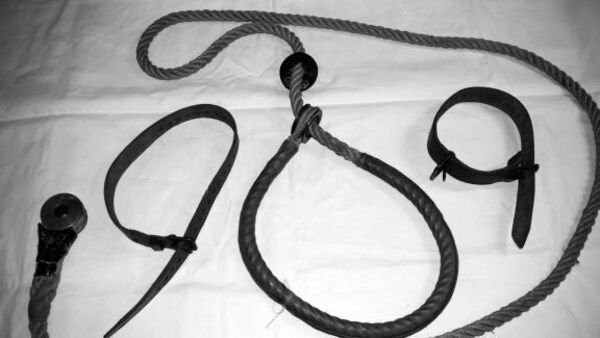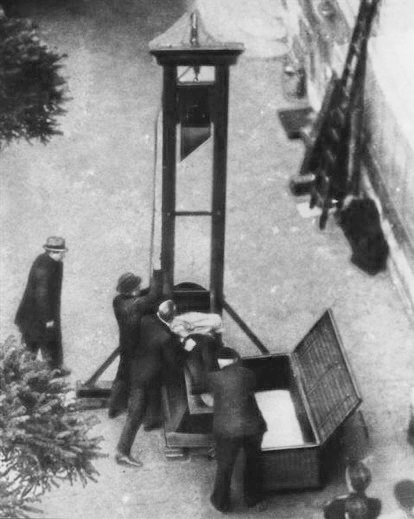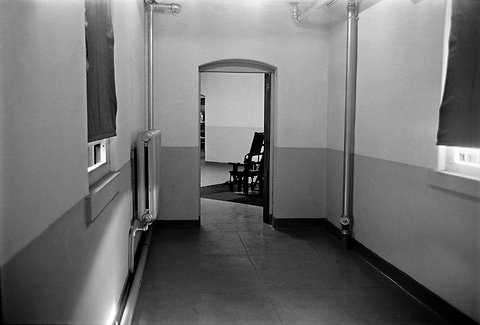Your cart is currently empty!

On This Day in 1959 – The curious case of Ralph Dawkins.
When Ralph Dawkins and Jackson Turner became the 602nd and 603rd prisoners executed at Sing Sing it was probably to Dawkins’ immense surprise. Condemned by Judge McGrattan at the Queens County Court of robbery-murder on December 27 1957, Dawkins at least had some small shred of hope. Or so he thought.
When Ralph Dawkins and Jackson Turner became the 602nd and 603rd prisoners executed at Sing Sing it was probably to Dawkins’ immense surprise. Condemned by Judge McGrattan at the Queens County Court of robbery-murder on December 27 1957, Dawkins at least had some small shred of hope. Or so he thought. He was as wrong as he could be. His crime, along with a minor legal error on his part, would cost Dawkins his life
Convicted beside Dawkins were Turner (who would die with him), William Wynn (who didn’t die) and the appropriately-named Thomas Frye (who also didn’t). Mere look-outs during the crime itself, Frye and Wynn had been spared execution by Governor Averill Harriman. Wynn was only 17 at the time of the murder, Frye was only 20. New York’s felony murder statute made no distinctions about age, race, motive or an individual’s degree of participation. If went on a robbery that became a murder then you were equally liable regardless.
Harriman, though, could exercise executive clemency and for Wynn and Frye that was the difference betwen life and death. Turner (aged 21) and Dawkins (aged 22, the shooter and the only one of the four carrying a gun) had not. While Turner had nothing to bank on but the Governor commuting his sentence Dawkins thought he still had an ace left to play, an appeal to the US Supreme Court. As it turned out Dawkins’ ace was really a busted flush.
The four defendants had been fighting execution with stay after stay and failed appeal after failed appeal. Dawkins had filed another with the US Supreme Court asking that they reconsider a previous appeal. Had he been a lawyer himself he would have known to specifically request a stay of execution until the Court could rule on his petition. Originally slated to die with Turner and multiple murderer Leroy Keith, stays saved Keith until July 23, one week after Dawkins and Turner. Dawkins and Turner fought for over a year to cheat the chair, but to no avail.
Unfortunately for 22-year-old Dawkins he wasn’t a lawyer, his petition didn’t request a stay and the Supreme Court ruled against his final appeal without even knowing he had already died. They ruled on his case on 19 October 1959, Dawkins and Turner having walked their last mile on July 16. Faced with its usual a huge number of writs and a lack of communication between the Court and Sing Sing Prison, the Court heard and denied a petition from a petitioner who was already dead. As the next day’s New York Herald Tribune put it:
“Ralph Dawkins, already executed, was the loser today in a Supreme Court order that didn’t matter to him. Convicted of killing a South Ozone Park, Queens, N.Y., grocer in a 1957 holdup, Dawkins appealed to the high court and was turned down last April. He asked reconsideration but failed to request a stay of execution and was put to death July 16. There was no official notification to the Supreme Court that the case had been disposed of with such finality when today it denied his request for a rehearing.”
It must have been news to Dawkins as well. He probably thought merely requesting a rehearing in a capital case automatically secured more time to actually do that and it didn’t. Having already lost his one mandatory appeal in New York State’s courts no other court was obliged to issue a stay he hadn’t asked for, nor did some branches of the judiciary have any authority to do so. The devil being in the detail, Dawkins never saw it coming.
This raises something of a legal quandary. Had the Court ruled in Dawkins’ favour, they would have been ordering a delay on behalf of a dead man. The resulting legal and public embarrassment over the case would have made it far more prominent than it was. On the other hand, the Empire State had a perfectly-legal death warrant to execute and no legal impediment at the time State Electrician Dow Hover pulled his lever. What effect, if any, this might have had on subsequent legal practice can only really be guessed at.
Dawkins and Jackson were also notable for being SIng SIng’s penultimate double execution, the last double being Henry Flakes and Walter Green on 19 May 1960. When once singles and doubles had been the norm, triples frequent, quadruple and quintuples occasional, now New York’s fifth and final State Electrician found himself in decreasing demand.In August 1912 there had even been seven men executed in the same day. Deputy Sheriff Dow Hover made only rare visits to the death chamber, executing fewer men in the average year than some of his predeceessors had in a single day.
Just as time had run out for so many residents of SIng Sing’s purpose-built ‘Death House’ capital punishment was facing the end in New York State as well. After Flakes and Green only six more would walk the last mile, the last being Eddie Lee Mays on 15 August 1963. Mays would be Old Sparky’s 695th and final victim. .
I ran across Dawkins’ case while researching my first book ‘Murders, Mysteries and Misdemeanors in New York.‘ My second volume ‘Murders, Mysteries and Misdemeanors in Northern California,’ is out on August 28 and can be pre-ordered now.
One response to “On This Day in 1959 – The curious case of Ralph Dawkins.”
-
So, they did the crime, just the judicial roadblocks didn’t save the condemned, right? I fail to see the downside.




Leave a Reply